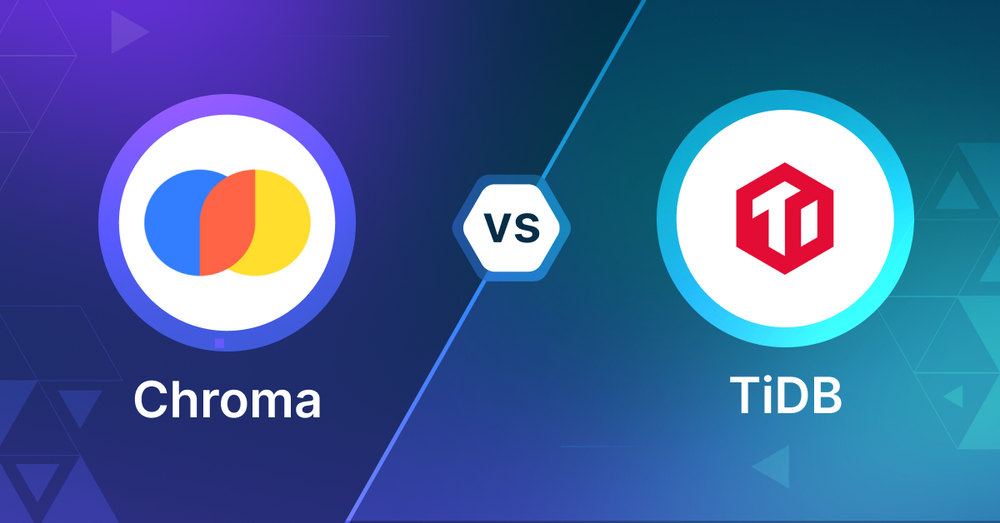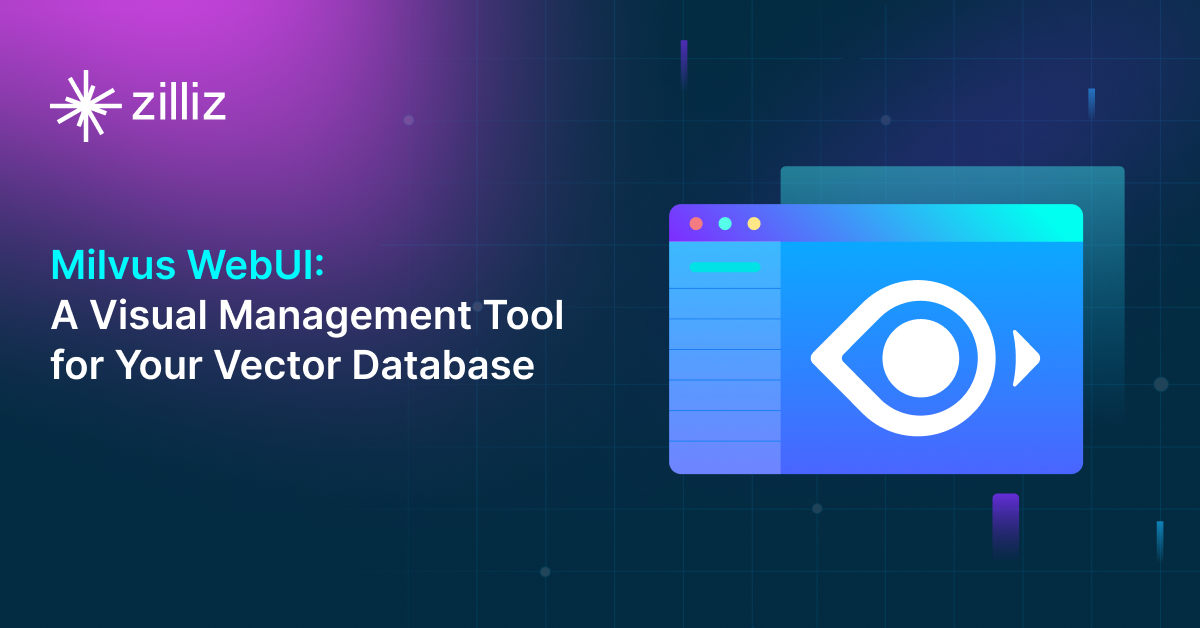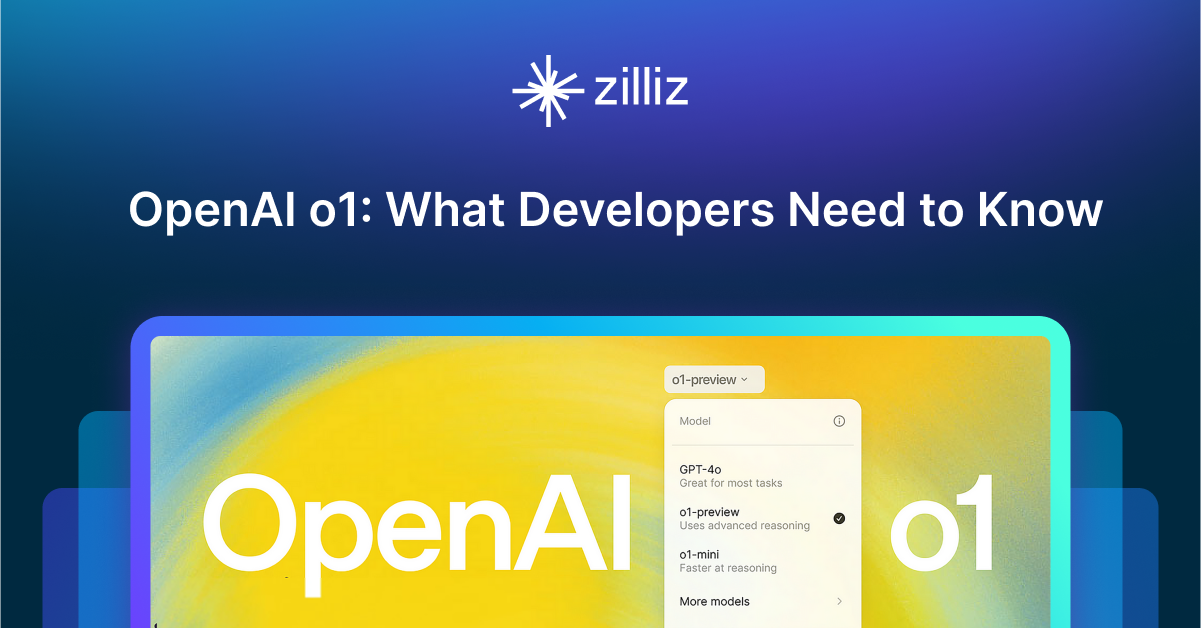Chroma vs TiDB: Choosing the Right Vector Database for Your AI Applications

As AI-driven applications become more prevalent, developers and engineers face the challenge of selecting the right database to handle vector data efficiently. Two popular options in this space are Chroma and TiDB. This article compares these technologies to help you make an informed decision for your vector database needs.
What is a Vector Database?
Before we compare Chroma and TiDB, let's first explore the concept of vector databases. A vector database is specifically designed to store and query high-dimensional vectors, which are numerical representations of unstructured data. These vectors encode complex information, such as text's semantic meaning, images' visual features, or product attributes. By enabling efficient similarity searches, vector databases play a pivotal role in AI applications, allowing for more advanced data analysis and retrieval.
Vector databases are adopted in many use cases, including e-commerce product recommendations, content discovery platforms, anomaly detection in cybersecurity, medical image analysis, and natural language processing (NLP) tasks. They also play a crucial role in Retrieval Augmented Generation (RAG), a technique that enhances the performance of large language models (LLMs) by providing external knowledge to reduce issues like AI hallucinations.
There are many types of vector databases available in the market, including:
Purpose-built vector databases such as Milvus, Zilliz Cloud (fully managed Milvus)
Lightweight vector databases such as Chroma and Milvus Lite.
Traditional databases with vector search add-ons capable of performing small-scale vector searches.
Chroma and TiDB represent different approaches to vector databases. Cassandra is a traditional database that has evolved to include vector search capabilities and Vald, on the other hand, is a purpose-built vector database. It was designed from the ground up to handle vector data and perform similarity searches efficiently. As a specialized solution, Vald focuses exclusively on vector operations and is optimized for tasks like similarity search and recommendations.
What is Chroma? An Overview
Chroma is an open-source, AI-native vector database that simplifies the process of building AI applications. It acts as a bridge between large language models (LLMs) and the data they require to function effectively. Chroma's main objective is to make knowledge, facts, and skills easily accessible to LLMs, thereby streamlining the development of AI-powered applications. At its core, Chroma provides tools for managing vector data, allowing developers to store embeddings (vector representations of data) along with their associated metadata. This capability is crucial for many AI applications, as it enables efficient similarity searches and data retrieval based on vector relationships.
One of Chroma's key strengths is its focus on simplicity and developer productivity. The team behind Chroma has prioritized creating an intuitive interface that allows developers to quickly integrate vector search capabilities into their applications. This emphasis on ease of use doesn't come at the cost of performance. Chroma is designed to be fast and efficient, making it suitable for a wide range of applications. It operates as a server and offers first-party client SDKs for both Python and JavaScript/TypeScript, providing flexibility for developers to work in their preferred programming environment.
Chroma's functionality revolves around the concept of collections, which are groups of related embeddings. When adding documents to a Chroma collection, the system can automatically tokenize and embed them using a specified embedding function, or a default one if not provided. This process transforms raw data into vector representations that can be efficiently searched. Along with the embeddings, Chroma allows storage of metadata for each document, which can include additional information useful for filtering or organizing data. Chroma provides flexible querying options, allowing searches for similar documents using either vector embeddings or text queries, returning the closest matches based on vector similarity.
Chroma stands out in several ways. Its API is designed to be intuitive and easy to use, reducing the learning curve for developers new to vector databases. It supports various types of data and can work with different embedding models, allowing users to choose the best approach for their specific use case. Chroma is built to integrate seamlessly with other AI tools and frameworks, making it a good fit for complex AI pipelines. Additionally, Chroma's open-source nature (licensed under Apache 2.0) provides transparency and the potential for community-driven improvements and customizations. The Chroma team is actively working on enhancements, including plans for a managed service (Hosted Chroma) and various tooling improvements, indicating a commitment to ongoing development and support.
What is TiDB? An Overview
TiDB, developed by PingCAP, is an open-source, distributed SQL database that offers hybrid transactional and analytical processing (HTAP) capabilities. It is MySQL-compatible, making it easy to adopt for teams already familiar with the MySQL ecosystem. TiDB's distributed SQL architecture provides horizontal scalability like NoSQL databases while retaining the relational model of SQL databases, making it highly flexible for handling both transactional and analytical workloads.
One of TiDB's core strengths is its HTAP architecture, which allows it to process transactional (OLTP) and analytical (OLAP) workloads in a single database, reducing the need for separate systems. Additionally, TiDB's MySQL compatibility makes it easy to integrate into existing environments that rely on MySQL without significant changes to the application code. The database also features auto-sharding, automatically distributing data across nodes to improve read and write performance while maintaining strong consistency.
TiDB supports vector search through integration with external libraries and plugins, enabling efficient management and querying of vectorized data. This feature, combined with TiDB's HTAP architecture, makes it a versatile option for businesses needing vector search capabilities alongside transactional and analytical workloads. The distributed architecture of TiDB allows it to handle large-scale vector queries once the necessary configurations are in place. While including vector search functionalities in TiDB requires additional configuration, the system's SQL compatibility allows developers to combine vector search with traditional relational queries. This flexibility makes TiDB suitable for complex applications that require both vector search and relational database capabilities, offering a comprehensive solution for diverse data management needs.
Key Differences
Search Methodology
Chroma specializes in vector search, using embedding-based similarity searches optimized for AI applications. It transforms data into vector representations for efficient querying based on semantic similarity. TiDB, while supporting vector search through external integrations, primarily uses traditional SQL querying methods. Its HTAP architecture allows it to handle both transactional and analytical queries efficiently, but vector search is not its core focus like it is for Chroma.
Data Handling
Chroma is designed to handle unstructured and semi-structured data by converting it into vector embeddings, making it ideal for text, images, and other AI-friendly data types. It stores these embeddings along with associated metadata. TiDB, as a relational database, excels at handling structured data in tables with defined schemas. While it can store semi-structured data in JSON format, its primary strength lies in managing relational data across distributed systems.
Scalability and Performance
Chroma is built for scalability in AI-specific contexts, focusing on efficiently handling large volumes of vector data and similarity searches. Its performance is optimized for these types of operations. TiDB offers horizontal scalability for both transactional and analytical workloads, using automatic sharding to distribute data across nodes. It's designed to maintain high performance and strong consistency even as data volumes grow, making it suitable for large-scale enterprise applications.
Flexibility and Customization
Chroma provides flexibility in terms of embedding models and data types, allowing developers to customize their vector search implementations. Its API is designed for ease of use in AI applications. TiDB offers flexibility through its SQL interface, allowing complex queries and data modeling typical of relational databases. It also provides some NoSQL-like features and supports customization through plugins, offering a blend of relational and distributed database capabilities.
Integration and Ecosystem
Chroma is designed to integrate seamlessly with AI tools and frameworks, making it a natural fit for AI-centric applications and pipelines. It offers client SDKs for Python and JavaScript/TypeScript. TiDB, being MySQL-compatible, integrates well with the vast MySQL ecosystem. It also supports integration with big data tools and can work with various data processing frameworks, making it suitable for complex data infrastructures in enterprise environments.
Ease of Use
Chroma prioritizes developer productivity with an intuitive API and straightforward setup process, aiming to reduce the learning curve for implementing vector search capabilities. TiDB, while offering powerful features, may have a steeper learning curve due to its distributed nature and the complexity of managing a distributed SQL database. However, its MySQL compatibility can ease adoption for teams familiar with MySQL.
Cost Considerations
As an open-source project, Chroma can be deployed for free, with costs primarily related to infrastructure and potential future managed services. TiDB, also open-source, may involve higher operational costs due to its distributed architecture and the resources required to run a full-featured distributed SQL database. Both may offer managed services in the future, which would introduce additional cost considerations.
Security Features
While specific details about Chroma's security features are not provided in the given information, as an AI-native database, it likely includes basic security measures for data protection. TiDB, being designed for enterprise use, offers robust security features including encryption, authentication, and fine-grained access control, which are crucial for protecting sensitive data in distributed environments.
When to Choose each
Chroma: Choose Chroma when your primary focus is on AI-driven applications that require efficient vector search capabilities. It's particularly well-suited for projects involving natural language processing, image recognition, recommendation systems, or any application where semantic similarity search is crucial. Chroma is an excellent choice for startups or research teams working on cutting-edge AI projects that need a simple, fast way to manage and query vector embeddings. It's also ideal for developers who want to quickly prototype or build AI applications without dealing with the complexities of setting up a full-scale distributed database system.
TiDB: Opt for TiDB when you need a robust, scalable database solution that can handle both transactional and analytical workloads in a distributed environment. It's particularly suitable for large enterprises or growing businesses that require MySQL compatibility but need to scale beyond the capabilities of traditional MySQL. TiDB is an excellent choice for applications that deal with large volumes of structured data and require complex SQL queries, while also needing occasional vector search capabilities. It's ideal for scenarios where you need strong consistency, high availability, and the ability to perform real-time analytics on transactional data.
Conclusion
Chroma excels in simplifying vector search for AI applications, offering an intuitive API and efficient management of embedding data. Its strengths lie in its AI-native design, ease of use, and optimization for vector similarity searches. TiDB, on the other hand, shines as a distributed SQL database with HTAP capabilities, providing scalability, MySQL compatibility, and the ability to handle complex transactional and analytical workloads. The choice between Chroma and TiDB should be guided by your specific use case, data types, and performance requirements. If your primary need is AI-driven vector search with simplicity and speed, Chroma is the way to go. However, if you require a comprehensive, scalable database solution that can handle diverse workloads including occasional vector searches, TiDB would be the more suitable option. Ultimately, the decision should align with your project's specific needs, considering factors such as data volume, query complexity, scalability requirements, and the balance between AI-specific functionality and traditional database capabilities.
When to Choose a Specialized Vector Database?
While Chroma and TiDB offer vector search capabilities, they are not optimized for large-scale, high-performance vector search tasks. If your application relies on fast, accurate similarity searches over millions or billions of high-dimensional vectors, such as in image recognition, e-commerce recommendations, or NLP tasks, specialized vector databases like like Milvus and Zilliz Cloud (the managed Milvus) are a better fit. These databases are built to handle vector data at scale, using advanced Approximate Nearest Neighbor (ANN) algorithms (e.g., HNSW, IVF ) and offering advanced features like hybrid search (including hybrid sparse and dense search, multimodal search, vector search with metadata filtering, and hybrid dense and full-text search), real-time ingestion, and distributed scalability for high-performance in dynamic environments.
On the other hand, general-purpose systems like Chroma or TiDB are suitable when vector search is not the primary focus, and you’re handling structured or semi-structured data with smaller vector datasets or moderate performance requirements. If you already use these systems and want to avoid the overhead of introducing new infrastructure, vector search plugins can extend their capabilities and provide a cost-effective solution for simpler, lower-scale vector search tasks.
Using Open-source VectorDBBench to Evaluate and Compare Vector Databases on Your Own
VectorDBBench is an open-source benchmarking tool designed for users who require high-performance data storage and retrieval systems, particularly vector databases. This tool allows users to test and compare the performance of different vector database systems such as Milvus and Zilliz Cloud (the managed Milvus) using their own datasets and determine the most suitable one for their use cases. Using VectorDBBench, users can make informed decisions based on the actual vector database performance rather than relying on marketing claims or anecdotal evidence.
VectorDBBench is written in Python and licensed under the MIT open-source license, meaning anyone can freely use, modify, and distribute it. The tool is actively maintained by a community of developers committed to improving its features and performance.
Download VectorDBBench from its GitHub repository to reproduce our benchmark results or obtain performance results on your own datasets.
Take a quick look at the performance of mainstream vector databases on the VectorDBBench Leaderboard.
Read the following blogs to learn more about vector database evaluation.
Further Resources about VectorDB, GenAI, and ML
- What is a Vector Database?
- What is Chroma? An Overview
- What is TiDB? An Overview
- Key Differences
- When to Choose each
- Conclusion
- When to Choose a Specialized Vector Database?
- Using Open-source VectorDBBench to Evaluate and Compare Vector Databases on Your Own
- Further Resources about VectorDB, GenAI, and ML
Content
Start Free, Scale Easily
Try the fully-managed vector database built for your GenAI applications.
Try Zilliz Cloud for FreeKeep Reading

Bringing AI to Legal Tech: The Role of Vector Databases in Enhancing LLM Guardrails
Discover how vector databases enhance AI reliability in legal tech, ensuring accurate, compliant, and trustworthy AI-powered legal solutions.

Milvus WebUI: A Visual Management Tool for Your Vector Database
Milvus WebUI is a built-in GUI introduced in Milvus v2.5 for system observability. WebUI comes pre-installed with your Milvus instance and offers immediate access to critical system metrics and management features.

OpenAI o1: What Developers Need to Know
In this article, we will talk about the o1 series from a developer's perspective, exploring how these models can be implemented for sophisticated use cases.
The Definitive Guide to Choosing a Vector Database
Overwhelmed by all the options? Learn key features to look for & how to evaluate with your own data. Choose with confidence.